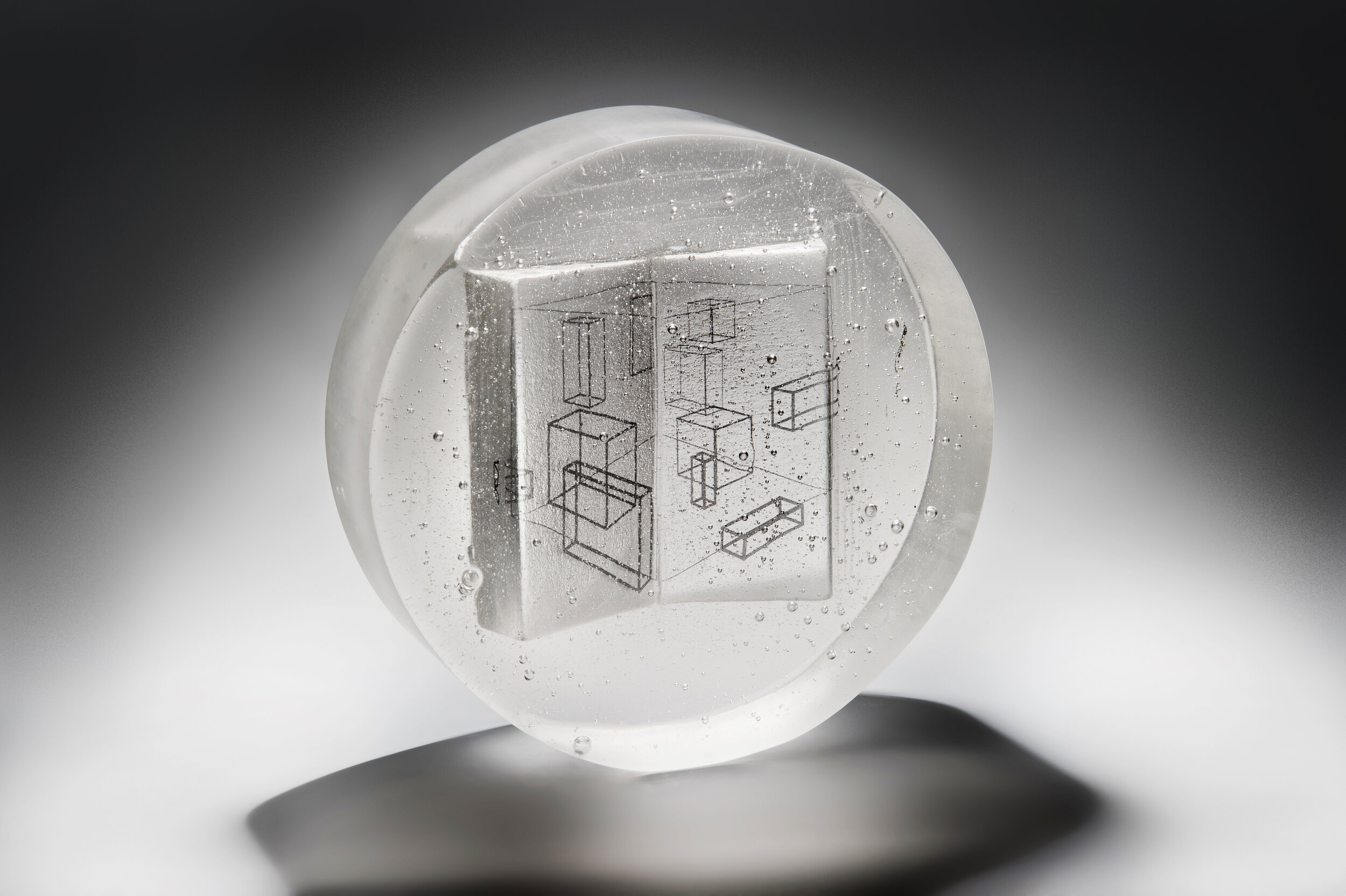PhD Research
Exploring the Optical Perception of Image in Glass
PhD research, by practice was undertaken, at the Royal College of Art, on a part-time basis from 2013-2020.
“My focus was on the creation of the 3D or spatial image and the notion of glass as a facilitator, in working with and challenging our perception of space”.
Abstract
Within the contemporary world 3D film and television imagery is at the cutting edge of visual technology. For decades we have been captivated by the creation of such visual illusions/allusions that play with our perception of the world. From auto-stereoscopic barrier methods, pioneered in 1692 by French painter G. A. Bois-Clair, to the ‘Op’ Art movement of the 1960’s and more recently Patrick Hughes reverse perspective paintings.
By building on these new and old technologies I have extended my own practice, which engaged with the 2D image as a 3D allusion/illusion in glass, by examining how this type of image can be created and perceived within glass. I have explored theories of optical perception in connection with the binocular recognition of depth and space, in addition to kinetic clues to distance, through motion parallax monitoring, and assumptions about default linear perspective, light and inference within our personal schemata.
- “Optical illusion” being an instance of a wrong or misinterpreted perception of a sensory experience. The distortion of senses, revealing how the brain organises and interprets visual information. An individual’s ability to perceive depth, 3D form and motion.
My practical research focuses on the perceived creation of the 3D image, within glass, and explores the notion of glass as a facilitator in working with and challenging the themes of 3D image perception. I have particularly addressed artistic spatial illusionary methods, reverse perspective techniques, auto-stereoscopic image-based systems, Parallax stereograms and Lenticular print and lenses technology
Through building upon my previous practice, of working with multiple layered images within cast glass, with more complex and scientific optical methods I have explored the perception of the image by working with new and old 3D technologies in order to produce a body of work which examines this perception within glass.
During my research I have developed an original casting processes, vacuum casting lost wax process for glass, in addition to producing an accurate industry standard lenticular glass lens. This research intends to provide a theoretical basis for new glass working techniques, within the glass artist’s studio and the commercial world of print towards applications within architectural design, installation and image-based artwork in general.
Lenticular Images
Drawing inspiration from how we reference and perceive a given space and the changing perceptions within this. The work addressed traditional and contemporary artistic spatial illusionary methods. Lenticular technology was fundamental to this exploration and the technical expertise, in perfecting the casting of a glass lens and creation of a corresponding image, was a chemical and mathematical challenge that I relished.
Geometric Pattern
Initial works, tested this original technique, by adopting recognisable geometric forms and referencing the mathematical quantifiable notion of this space, devoid of emotion.
Then ideas began to address concerns of ‘place’, within the spatial context.
Sequential movement of this reverse perspective cast glass work
Reverse perspective challenges and disorientates how we perceive the object in front of us, creating a visual paradox in the brain, as we struggle to comprehend the form within.
Lenticular Glass Sculpture
Final works explored the notion of ‘Space’ and ‘Place’.
“It is this dialogue between mimetic notions of landscape, which hold an emotional resonance, and the mathematical quantifiable nature of space, devoid of emotion, which is of interest to me.”












